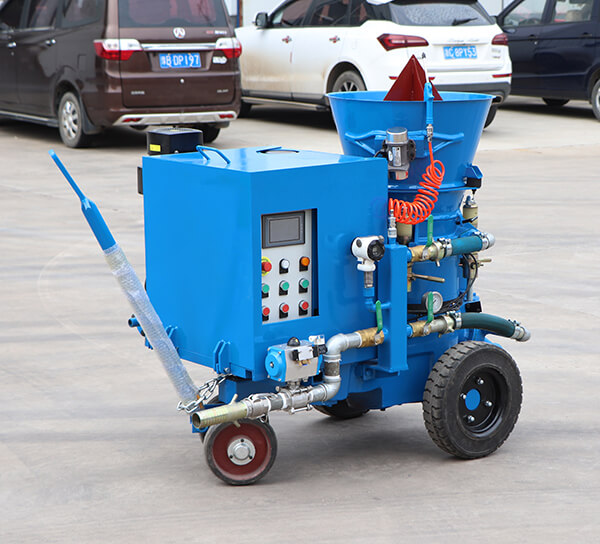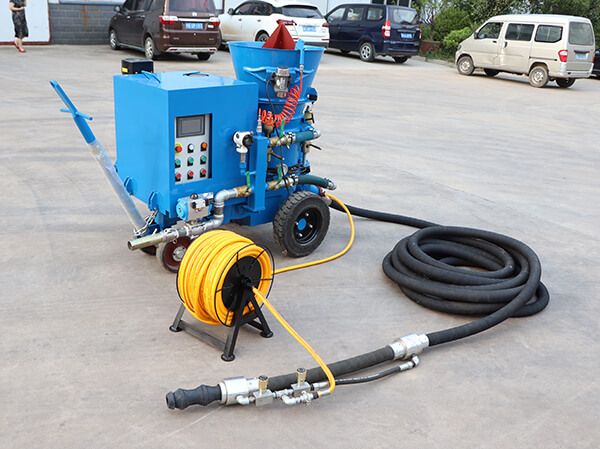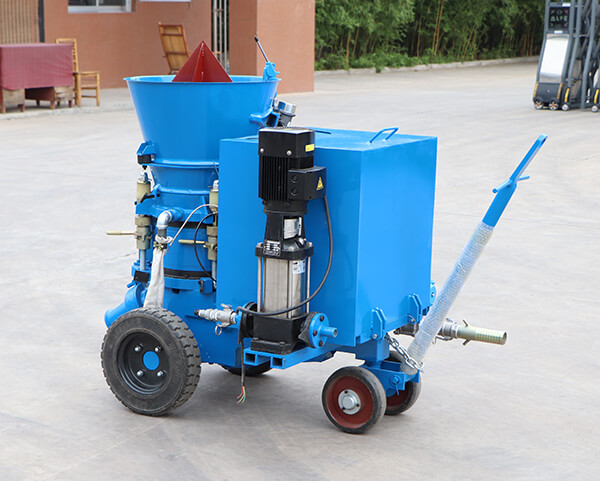Refractory gunning machine in cement factory
The dry mixture for spraying or transportation is poured in the machine and smoothly fills chamber of the rotor below the hopper. To fill a mixture into the rotor more easily, a electric vibrator and a rippling are fitted in the hopper. The rotating movement of the rotor moves the mixture along by 180° in the clockwise direction. The mixture is thus blown out from individual chamber of the rotor into transport hoses. As the materials passes through the blower into the transport hoses, lower pressure air is added to enhance the continuous flow of the material in hoses. The hoses are equipped with the spraying nozzles assy at the end, into which the mixing water is fed at the same time to wet the transported mixture. The required wetting of the mixture is controlled with the supply cock.

Compared with dry mix refractory gunning machine, wet gunning has some problem. Such as, the machine or the gunning hose may get clogged by already moistened refractory material, particularly when not in continuous use; So the wet process must be carefully controlled. Also, machine requires more intensive cleaning and is not recommend an efficient operation for applications less than 400kg. For dry gunning, blockages in the conveying hose can be blown free by compressed air only.
There is three essential requirements for a good gunning repair. like optimal moistening, homogeneous mixing of the gunning material with water, and a high quality china dry refractory gunning machine that guarantees even conveying.

With pre-moistening a share of the gunning water is added some meters away from the gunning nozzle and relies on the turbulence within the conveyance for premixing. This approach, however, is very susceptible to operational problems. For instance if too much water is added in advance this can lead to clogging, particularly with quick binding systems where hardening starts inside the hose. Too much water reduces refractory quality and refractory lifetime. Also, the water can dissociate in the liquid steel to hydrogen, which can be detrimental to some steel grades (micro-cracks). With standard mixing heads (for dry gunning) the water is jetted through radial holes and, in order to compensate for inadequate initial moistening, the operator often works
with a surplus of water so that the dust is reduced. This, however, often leads to use of an incorrect water/cement ratio, resulting in reduced refractory durability. Improvements have been achieved by use of pressure increasing high pressure water pumps so that the water jet has become sharper and more readily reaches the centre of the nozzle cross section.


